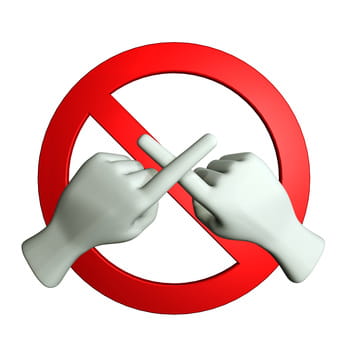Limited Authority Negotiation Tactic

Understand how the authority limits tactic must be effectively employed as to enhance your negotiation results.
Negotiation tactics are perhaps one of the most significant tools we use in the negotiating process. However, tactics don’t often leap out shouting, “Here I am, look at me.” If they did, the other side would see right through them. They wouldn’t be effective. More often than not, tactics are subtle, hard to identify, and used for many purposes. A good example is the limited authority, or authority limit, tactic.
The essence of authority limit is that the negotiator lacks the authority to complete a final agreement – or claims that they lack that authority. In fact, there are three possibilities. The negotiator may:
- Actually lack authority. In this scenario, they would need to bring the proposed agreement back to the individual or group with the ultimate authority.
- State that their authority is restricted. However, in fact, they could wrap up the proposed agreement.
- Technically lack authority. However, they recognize that it’s likely the “higher authority” will approve their recommendations.
Reasons for Using the Authority Limit Tactic
There are multiple uses for the authority limit tactic.
To Stall Negotiations Indirectly
One of the most common uses is to achieve a delay without directly asking for one. In this way, the absent authority presents an opportunity for the negotiator to:
- Go back to their organization.
- Think through the positions of each side.
- Evaluate the proposed agreement.
To Get a “No” from Higher Up
Another use of the tactic is to obtain a “no” from the authority even when the negotiator could have said no themselves. The purpose here might be to reinforce the refusal to make concessions. It might also be an attempt to make the negotiator seem to be the good guy and the organization or the higher-ups the bad guys. (Be careful about painting your own organization as the bad guy too often. This tactic can tend to backfire.)
To Obtain Pricing Agreements
Purchasers occasionally use the authority limit tactic by delineating a range where they can make the deal and indicating that anything higher than that amount necessitates lengthy review and approval. Thus, the purchasing agent might suggest that they could purchase the instrument for $10,000, but if the salesperson insists on $11,000, it has to go through an approval process.
The salesperson might use the authority limit tactic by stating that they knew that the boss would decline the offer proposed by the buyer if it were just presented verbally. However, the boss “just might” approve it if it were presented in the form of a signed purchase order.
Other Key Reasons for Using the Authority Limit Tactic
The authority limit tactic can be implemented in a number of other ways. For example, a negotiator could realize that they can complete the deal based on what the negotiating sides have agreed to so far. However, they may say they need to go back and check with the authority.
In that scenario, the negotiator might have been trying to show the other side that they “really went to bat” for the other side with the higher-ups. Alternatively, the negotiator might be attempting to indicate that it was hard to get approval and that the other side really can’t hope for any more concessions in this negotiation.
Always Consider the Other Side’s Authority
You should always be concerned about the authority of the other side. Try to establish as early as possible their level of authority, or at least what they claim to be their level of authority. If their authority is limited, you can attempt to involve the decision maker. If this is not possible or you feel that it’s tactically inappropriate, proceed with the negotiations with an acute awareness that the person you are dealing with either does not have, or says that they do not have, the final authority.
One way to deal with this may be to use the person on the other side of the table as a messenger, getting points agreed to by the person with authority step by step.
The Overall Risks of Using Tactics
Finally, there are two caveats that apply to the use of all negotiating tactics. Tactics usually carry with them some degree of risk or can backfire. For example, one of the most common counter-moves negotiators use to oppose the authority limit tactic is the end run. I.e., “If you can’t make the decision, let me talk to the person who can.”
Second, never employ a tactic or strategy that you are uncomfortable with or that you believe to be improper. However, always attempt to recognize tactics and understand how they work so that you can respond effectively when they are used against you.
Michael Schatzki is a negotiator and presenter of the Negotiation Dynamics system.
YOU MAY ALSO LIKE







